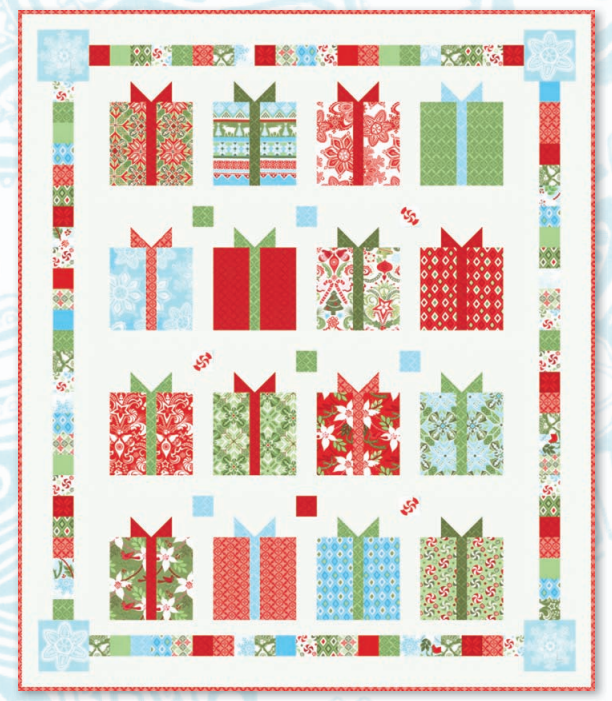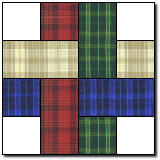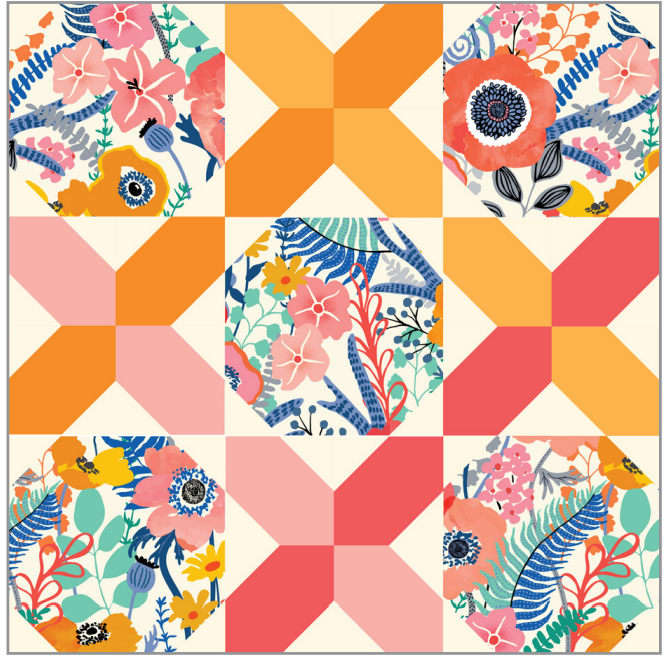In the vibrant world of quilting, there’s an enduring charm in traditional block patterns that never seems to fade. Among these classic designs, the Carolina Lily block pattern stands out for its elegance and timeless appeal. With its intricate arrangement of shapes and captivating visual impact, the Carolina Lily block has been a favorite among quilters for generations.
In this article, we’ll delve into the history, construction, and creative possibilities of the Carolina Lily block pattern, inviting both beginners and seasoned quilters to explore its beauty.
The Carolina Lily block pattern has deep roots in American quilting history, with origins dating back to the 19th century. It was a popular choice among quilters in the Carolinas and other southern states, hence the name. This block pattern was often used in quilts made for special occasions such as weddings or passed down through generations as cherished heirlooms.
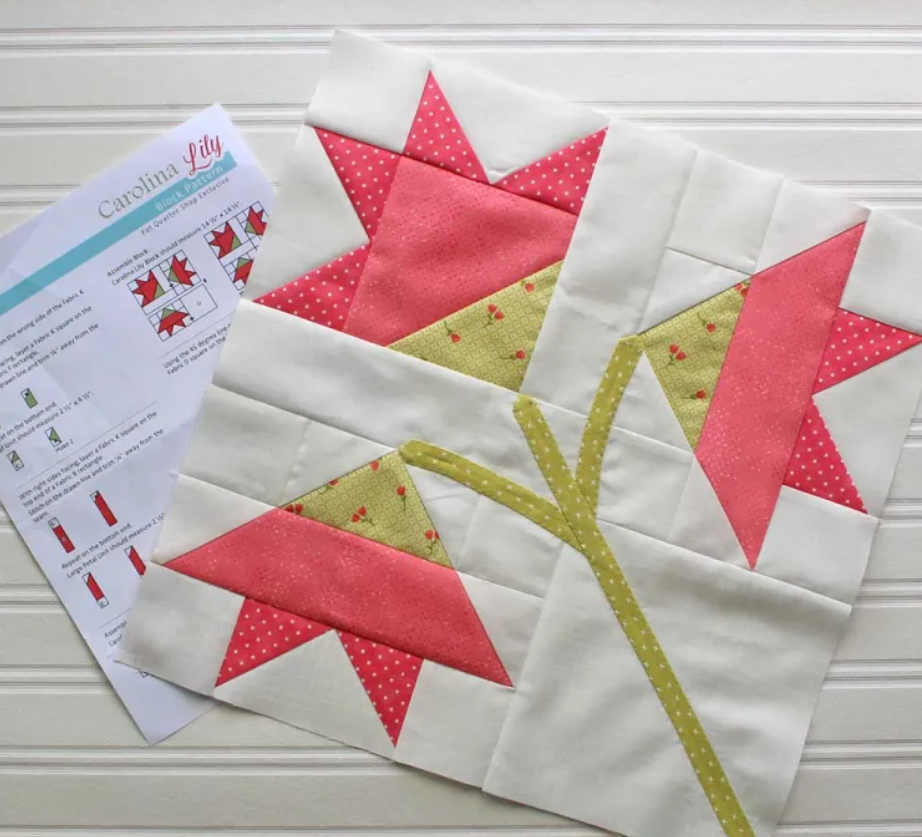
At its core, the Carolina Lily block pattern features a striking floral motif composed of geometric shapes. Traditionally, the block consists of diamond-shaped petals arranged around a central square or circle, creating the illusion of a blooming lily. The petals are typically made using a combination of half-square triangles and squares, allowing for endless variations in color and fabric selection.
Step-by-step Approach:
Choose your fabrics: Select a range of fabrics that complement each other well and reflect the desired aesthetic for your quilt. Consider using contrasting colors for the petals and center square to enhance the visual impact.
Cut your pieces: Begin by cutting the fabric into the necessary shapes according to your chosen block size. Precision is key to ensuring that the pieces fit together seamlessly.
Assemble the petals: Piece together the half-square triangles and squares to form the diamond-shaped petals. Pay attention to the placement of colors to achieve the desired effect.

Arrange the block: Once the petals are complete, arrange them around the central square or circle to form the lily shape. Experiment with different layouts until you find one that you’re satisfied with.
Sew the block together: Carefully sew the individual pieces together, taking care to maintain accurate seam allowances. Press the seams flat to create a smooth and polished finish.
Creative Possibilities: One of the most appealing aspects of the Carolina Lily block pattern is its versatility. Quilters can interpret this classic design in countless ways, from traditional to modern interpretations. Experiment with bold color combinations, fabric textures, and layout variations to put your own unique spin on the pattern.
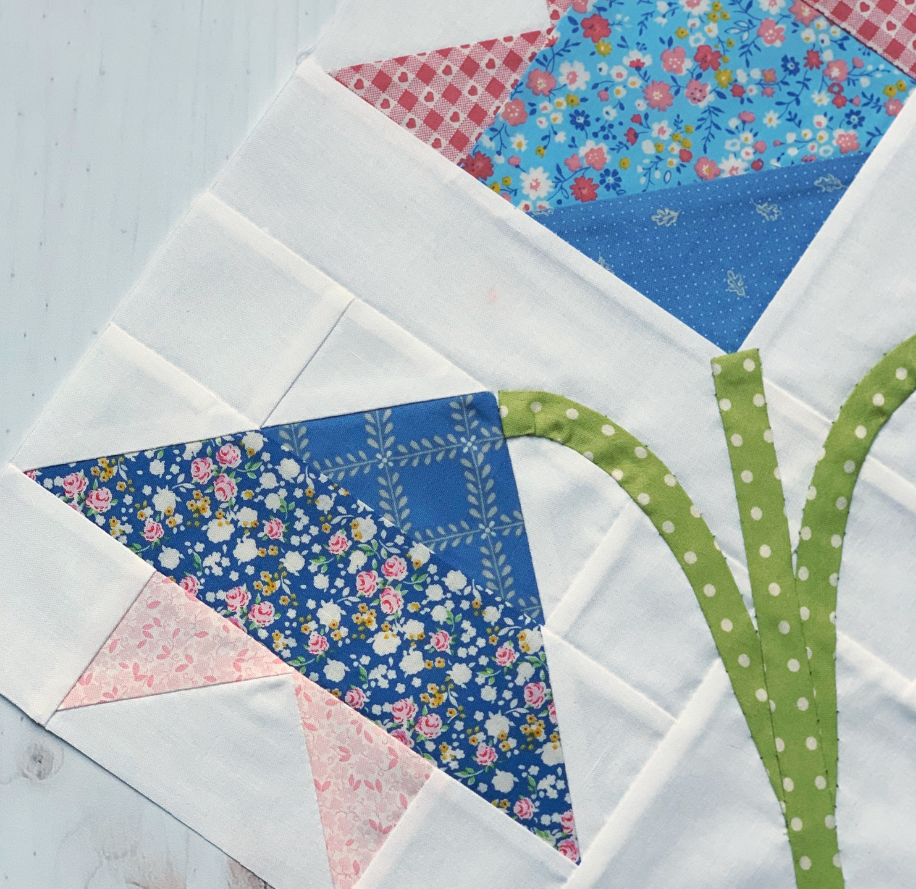
For beginners, starting with smaller blocks or simplified versions of the Carolina Lily pattern can be a great way to build confidence and master the basic techniques involved. As your skills progress, you can gradually tackle more complex variations and explore creative quilting techniques such as appliqué or embroidery to embellish your blocks further.
Whether you’re crafting a cozy throw quilt for your home or a breathtaking masterpiece to showcase your quilting prowess, the Carolina Lily block pattern offers endless opportunities for creativity and expression.
Hey there, quilty friend! Guess what? The PDF you’ve been eagerly waiting for is right below, and the best part? It’s absolutely free! 😊💕 Dive in and let your creativity soar!
In the rich tapestry of quilting traditions, the Carolina Lily block pattern remains a beloved symbol of timeless beauty and craftsmanship. With its intricate design and endless creative possibilities, this classic pattern continues to inspire quilters of all skill levels to embark on their own quilting journeys. Whether you’re drawn to its historical significance, artistic potential, or simply captivated by its elegant allure, the Carolina Lily block pattern is sure to add a touch of charm and sophistication to any quilt project.

